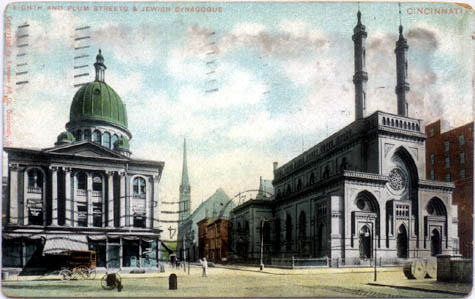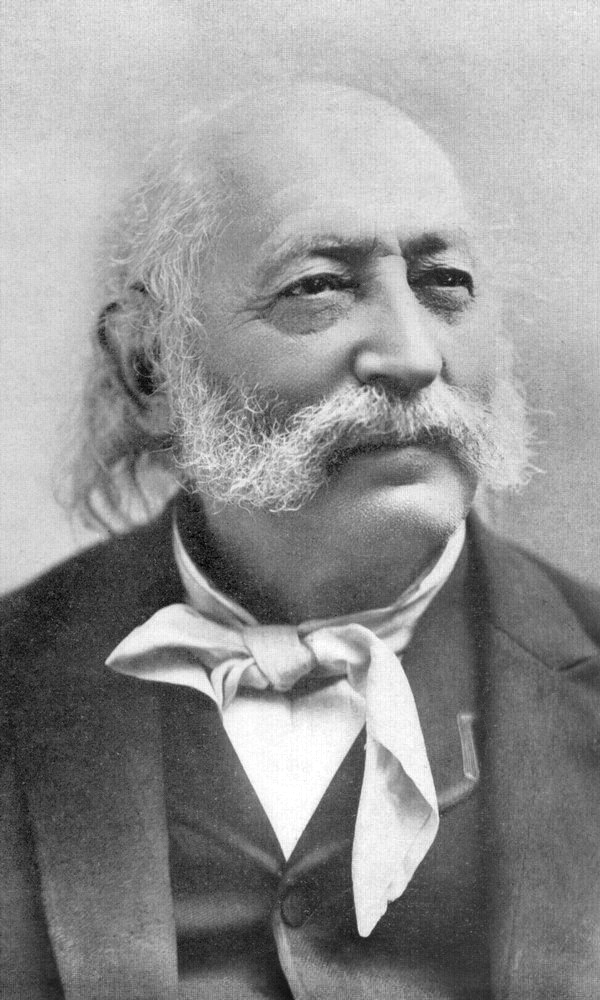Isaac M. Wise Temple on:
[Wikipedia]
[Google]
[Amazon]
The Isaac M. Wise Temple (formerly the Plum Street Temple) is the historic synagogue erected for Rabbi Isaac Mayer Wise and his congregation in Cincinnati, Ohio. Wise was among the founders of American
 In 1840, a group of German
In 1840, a group of German 

Wise Temple WebsitePlum Street TemplePlum Street Temple circa 1905Historical marker on site
{{Authority control German-Jewish culture in the United States German-American culture in Cincinnati National Register of Historic Places in Cincinnati Synagogues in Cincinnati Reform synagogues in Ohio Synagogues completed in 1866 Religious organizations established in 1841 National Historic Landmarks in Ohio Moorish Revival synagogues Founding members of the Union for Reform Judaism Moorish Revival architecture in Ohio Byzantine Revival architecture in Ohio Synagogues on the National Register of Historic Places in Ohio 1840 establishments in Ohio Byzantine Revival synagogues Cincinnati Local Historic Landmarks
Reform Judaism
Reform Judaism, also known as Liberal Judaism or Progressive Judaism, is a major Jewish denomination that emphasizes the evolving nature of Judaism, the superiority of its ethical aspects to its ceremonial ones, and belief in a continuous sear ...
. The temple building was designed by prominent Cincinnati architect James Keys Wilson. Its design was inspired by the Alhambra at Granada.
The temple is located at 720 Plum Street in Cincinnati, Ohio
Cincinnati ( ) is a city in the U.S. state of Ohio and the county seat of Hamilton County. Settled in 1788, the city is located at the northern side of the confluence of the Licking and Ohio rivers, the latter of which marks the state line wi ...
and was built by members of the Lodge Street Synagogue. It was built chiefly during the Civil War, at a cost of $275,000. The temple
A temple (from the Latin ) is a building reserved for spiritual rituals and activities such as prayer and sacrifice. Religions which erect temples include Christianity (whose temples are typically called churches), Hinduism (whose temples ...
was dedicated on Friday, August 24, 1866, and is among the oldest synagogue buildings still standing in the United States.
The temple is across Plum Street from the historic Saint Peter In Chains Cathedral and next to the site of the former St. Paul Episcopal Cathedral, which was torn down in 1937. In 1972, the Plum Street Temple was placed on the National Register of Historic Places
The National Register of Historic Places (NRHP) is the United States federal government's official list of districts, sites, buildings, structures and objects deemed worthy of preservation for their historical significance or "great artistic ...
, and it was designated a National Historic Landmark
A National Historic Landmark (NHL) is a building, district, object, site, or structure that is officially recognized by the United States government for its outstanding historical significance. Only some 2,500 (~3%) of over 90,000 places listed ...
in 1975 for its architecture and its role in the Reform movement.
History
 In 1840, a group of German
In 1840, a group of German Jewish
Jews ( he, יְהוּדִים, , ) or Jewish people are an ethnoreligious group and nation originating from the Israelites Israelite origins and kingdom: "The first act in the long drama of Jewish history is the age of the Israelites""The ...
immigrants in Cincinnati organized as a separate congregation, K.K. B'nai Yeshurun, breaking away from the existing congregation, K. K. Bene Israel. Their first place of worship was in a home on Third Street, between Sycamore and Broadway. In 1841 the congregation purchased and renovated for use as a house of worship a Federal-style, brick, four-story row house on Lodge Street.Picture available in ''The History of the K. K. Bene Yeshurun, of Cincinnati, Ohio, from the Date of Its Organization,'' Bloch Printing Co., 1892, book has no page numbers.
The congregation built its first synagogue in 1848 on Lodge Street in the gothic Revival style. The Lodge Street Synagogue was dedicated on September 22, 1848 in Cincinnati, Ohio
Cincinnati ( ) is a city in the U.S. state of Ohio and the county seat of Hamilton County. Settled in 1788, the city is located at the northern side of the confluence of the Licking and Ohio rivers, the latter of which marks the state line wi ...
. It can be seen here:
The congregation voted in 1853 to engage Rabbi Isaac Mayer Wise as its spiritual leader; this congregation built the Plum Street Temple beginning in 1865. Prior to the Civil War, the 200 families of K. K. B'nai Yeshurun (Isaac M. Wise Temple) envisioned a magnificent building to house their growing twenty-year-old congregation that had already gained a national prominence because of their rabbi, Isaac Mayer Wise. With his energy and vision, the congregation and Cincinnati were fast becoming a center of national Jewish life. Plum Street Temple was built chiefly during the Civil War, at a cost of $275,000. Plum Street Temple was dedicated on Friday, August 24, 1866. The original ledger book with all the entries of specific costs entailed in the construction of Plum Street Temple was found in the early 21st century. A commemorative march for piano, called ''The Progress March'', by P. Martens, was published by J. L. Peters. The temple is featured prominently on the cover.
Louis Grossmann succeeded Wise and served as the Temple's rabbi from 1898 to 1922. James G. Heller was rabbi of the Temple from 1920 to 1952.
In 1972 Sally Priesand
Sally Jane Priesand (born June 27, 1946) is America's first female rabbi ordained by a rabbinical seminary, and the second formally ordained female rabbi in Jewish history, after Regina Jonas. Priesand was ordained by the Hebrew Union College-J ...
became America's first female rabbi
A rabbi () is a spiritual leader or religious teacher in Judaism. One becomes a rabbi by being ordained by another rabbi – known as ''semikha'' – following a course of study of Jewish history and texts such as the Talmud. The basic form of ...
ordained
Ordination is the process by which individuals are consecrated, that is, set apart and elevated from the laity class to the clergy, who are thus then authorized (usually by the denominational hierarchy composed of other clergy) to perform ...
by a rabbinical seminary, and the second formally ordained female rabbi in Jewish history, after Regina Jonas
Regina Jonas (; German: ''Regine Jonas'';As documented by ''Landesarchiv Berlin; Berlin, Deutschland; Personenstandsregister Geburtsregister; Laufendenummer 892'' which reads: "''In front of the signed registrar appeared today... Wolff Jonas... a ...
of Germany in 1935. Priesand was ordained at Plum Street Temple.
In 1972, the Plum Street Temple was listed on the National Register of Historic Places
The National Register of Historic Places (NRHP) is the United States federal government's official list of districts, sites, buildings, structures and objects deemed worthy of preservation for their historical significance or "great artistic ...
.


See also
* Oldest synagogues in the United States *List of National Historic Landmarks in Ohio
This is a List of National Historic Landmarks in Ohio and other landmarks of equivalent landmark status in the state. The United States' National Historic Landmark (NHL) program is operated under the auspices of the National Park Service, and reco ...
References
External links
Wise Temple Website
{{Authority control German-Jewish culture in the United States German-American culture in Cincinnati National Register of Historic Places in Cincinnati Synagogues in Cincinnati Reform synagogues in Ohio Synagogues completed in 1866 Religious organizations established in 1841 National Historic Landmarks in Ohio Moorish Revival synagogues Founding members of the Union for Reform Judaism Moorish Revival architecture in Ohio Byzantine Revival architecture in Ohio Synagogues on the National Register of Historic Places in Ohio 1840 establishments in Ohio Byzantine Revival synagogues Cincinnati Local Historic Landmarks